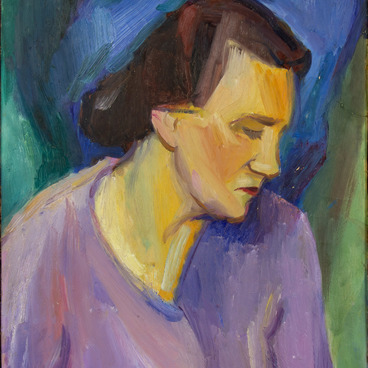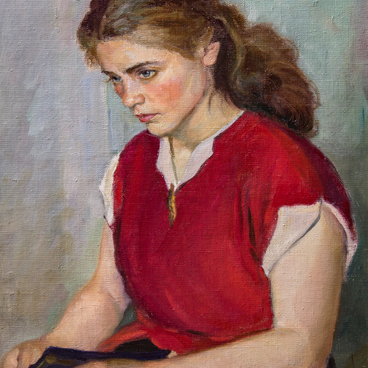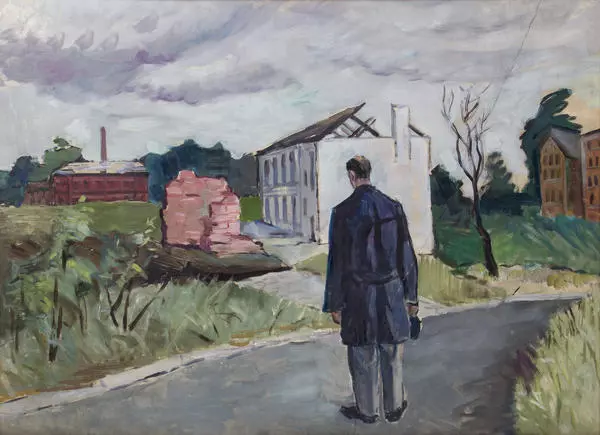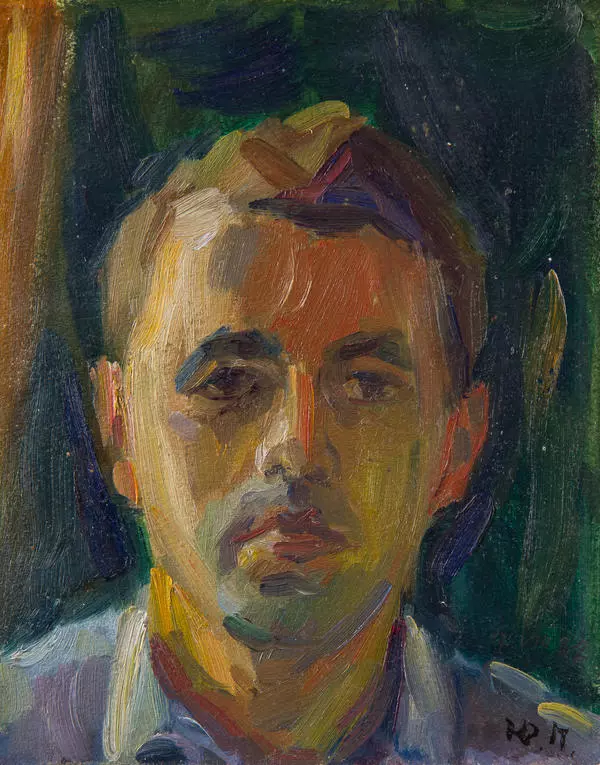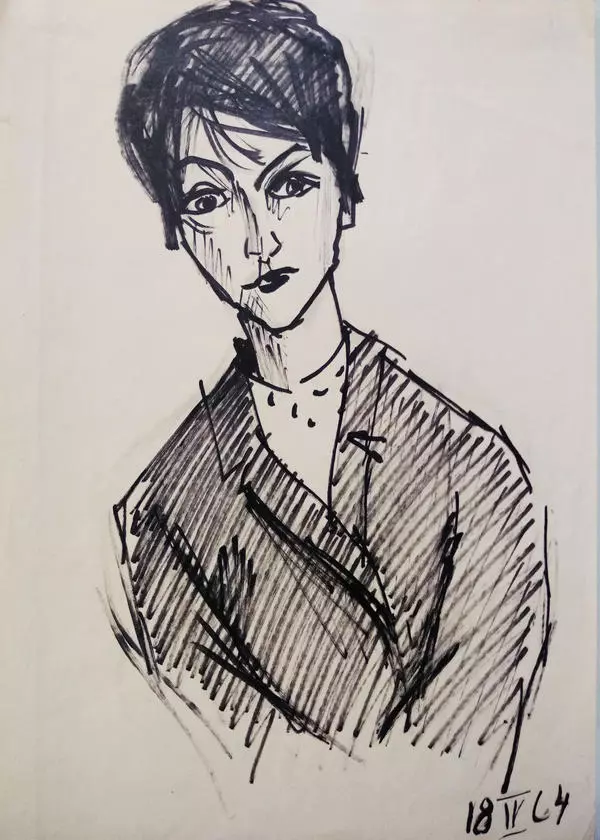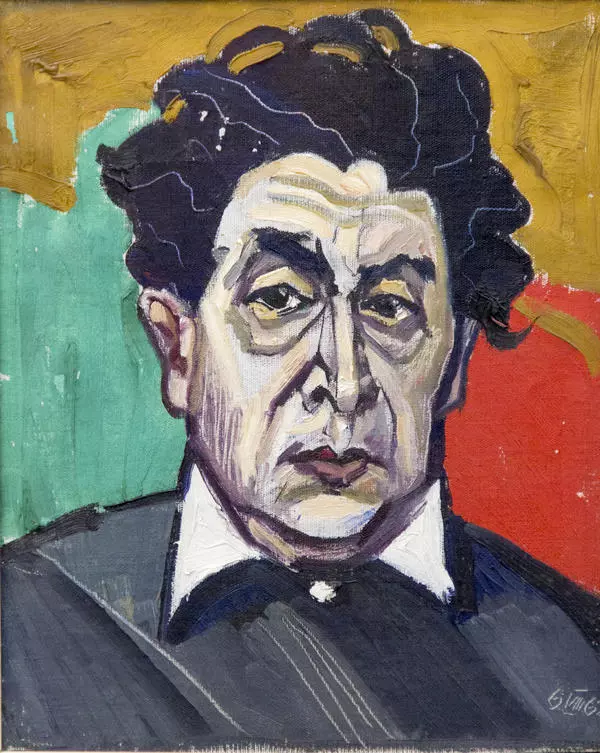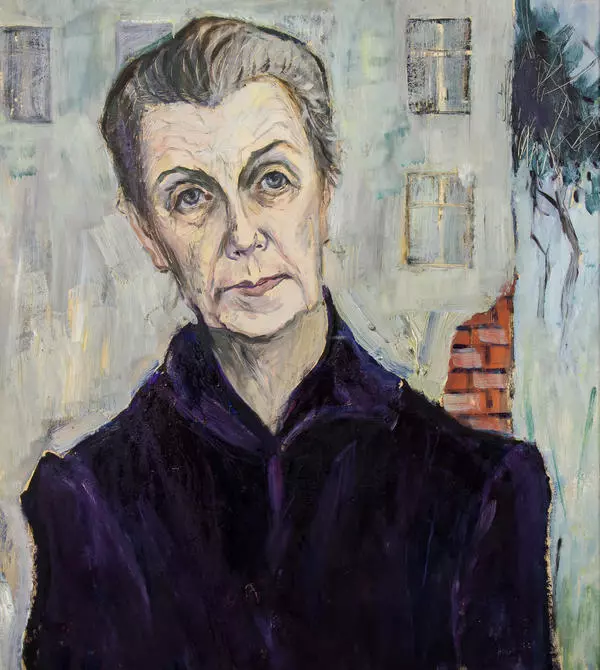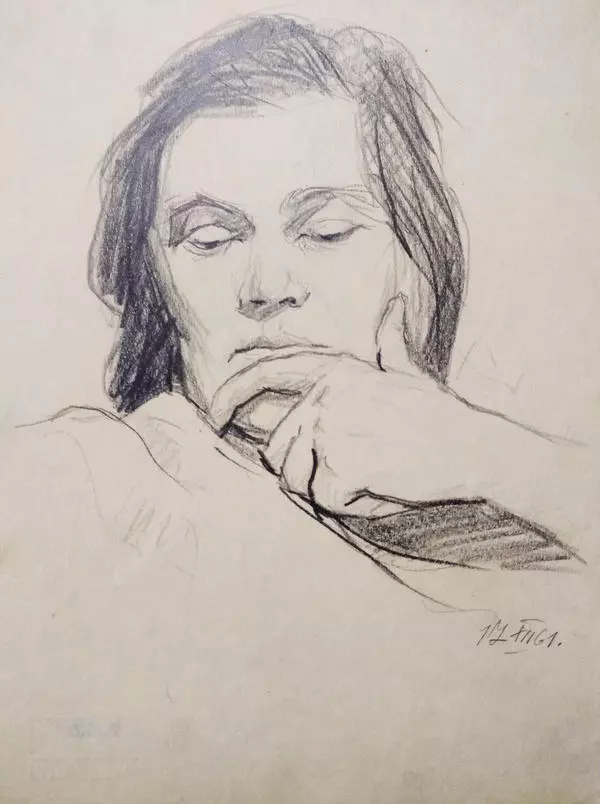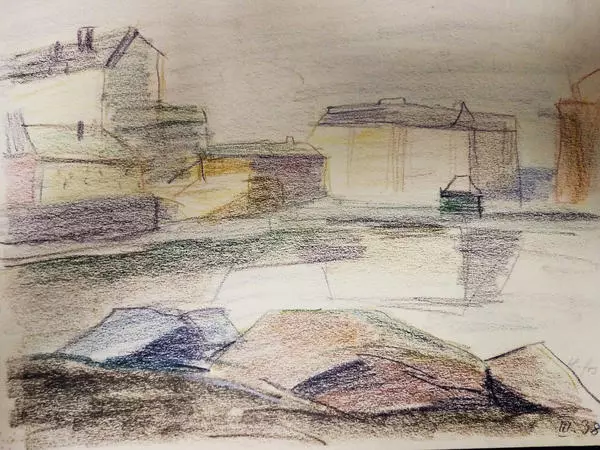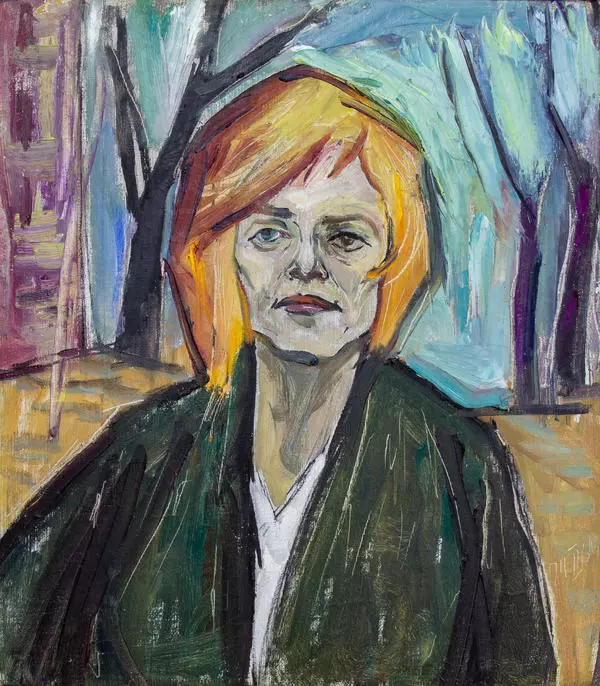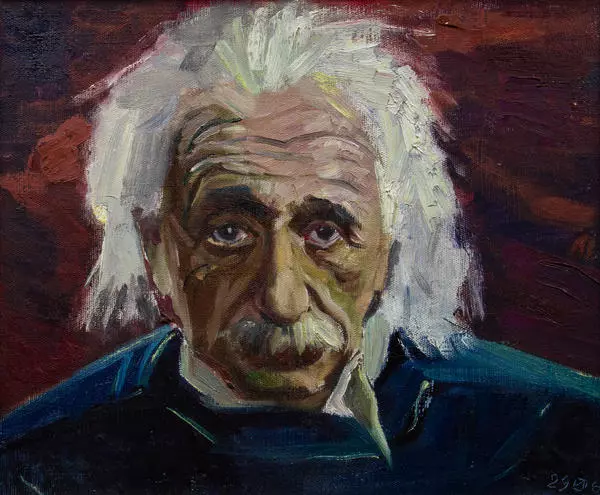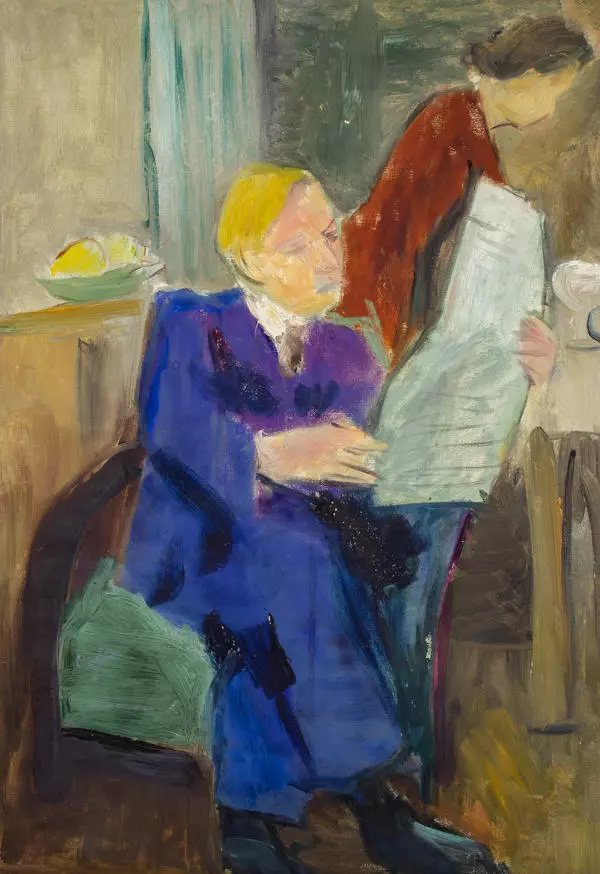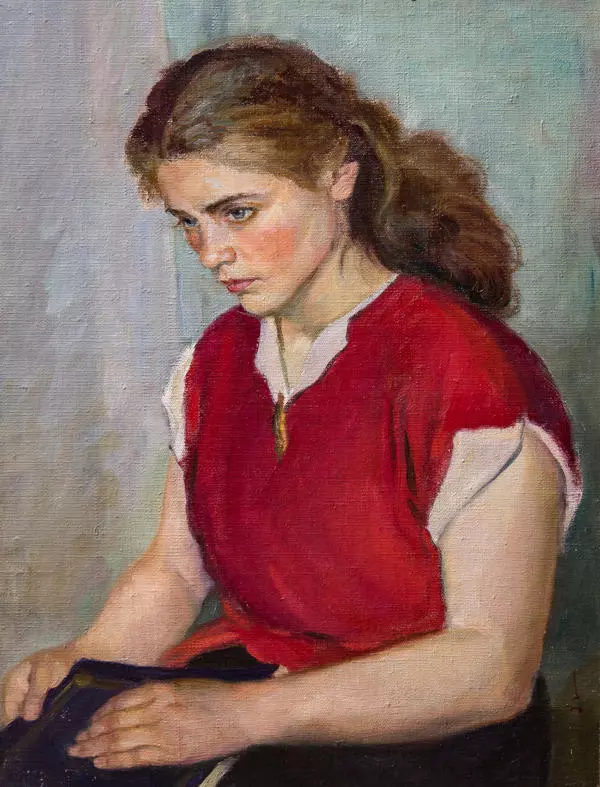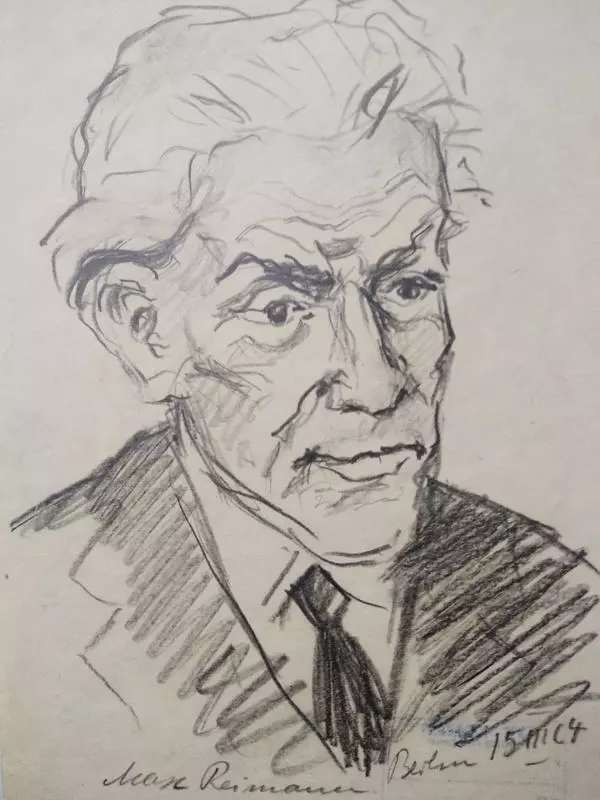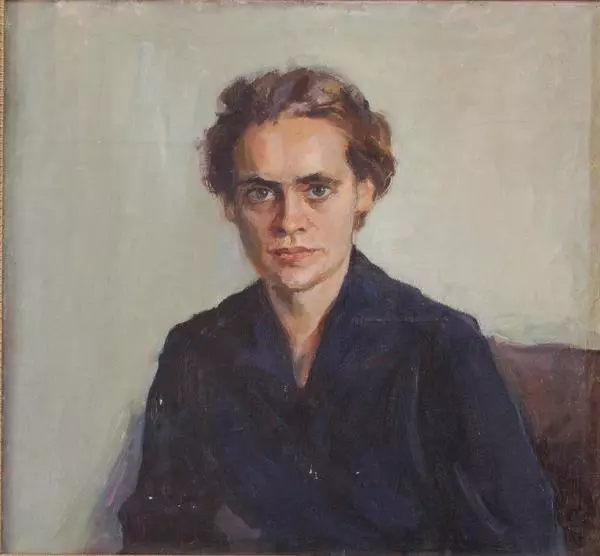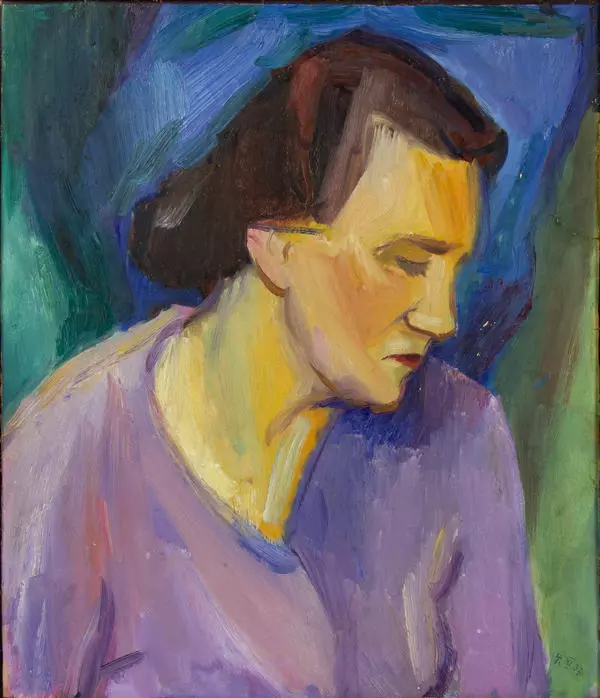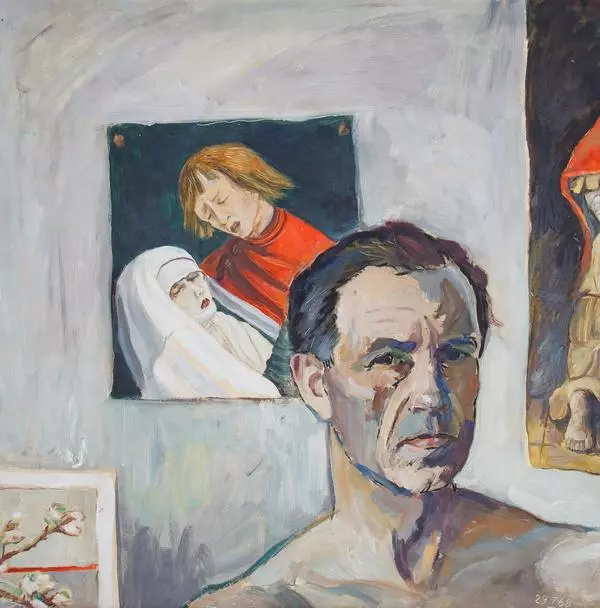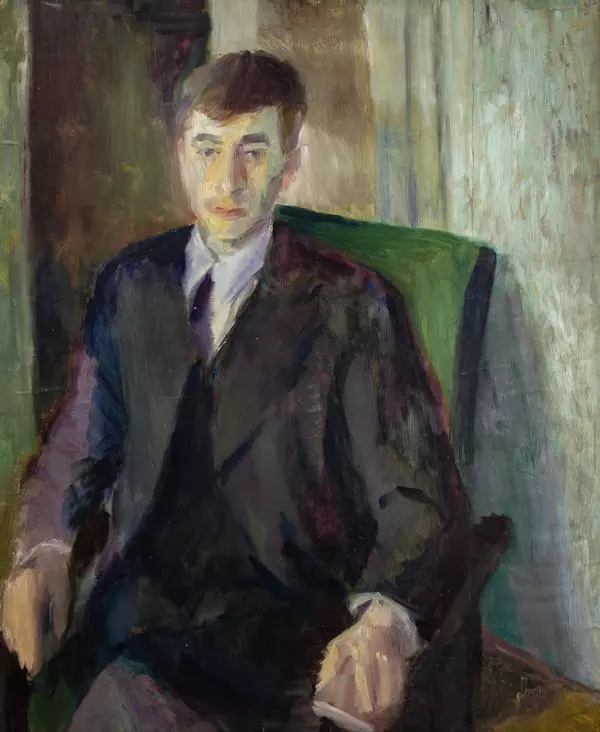Self-Portrait with Genia, drawn by Jurgis Preiss in 1940, is a sketch made with a simple pencil on a thin yellow paper. This image was the last one in which the artist depicted himself with his first wife Genia - journalist Gertrude Gennis.
Preiss met Gertrude, a communist and a Comintern activist, before World War II. Gertrude was an intelligence agent, and in 1930 Preiss also began collaborating with the military intelligence of the Soviet Union. The respectable couple - an artist and a journalist - in the 1930s traveled undercover all over Western Europe, visited Turkey and Yugoslavia. In 1937 a solo exhibition of Preiss was opened in Paris, but few of those who visited the Van Leer Gallery in those days knew that the master led a double life.
In 1939 Preiss was granted the Soviet citizenship and settled in Moscow. With the outbreak of World War II, he and his wife were sent to Siberia as persons of German nationality. The Preisses were released from the camp thanks to connections in the foreign intelligence, but the couple was not fully acquitted - the acquaintances did not have such an opportunity. The Preisses settled in Tomsk, where Hans Richard changed his name to Jurgis Jonasovich and got down to painting. In 1944 Gertrude died of tuberculosis.
The period from the 1940s to the mid-1950s is referred to as the Tomsk period in the work of Jurgis Preiss. It is directly related to the change of residence and the exile. That post-European period began in 1940, when Jurgis and Gertrude were forced to leave for Saratov. It was there, where the first works with tragic notes appeared. Among them is the pencil sketch Self-portrait with Genia. The composition is unusual: in this sketch, for the first time, Preiss placed himself, not his wife, in the foreground. The researchers interpret this tense, restless gesture as the implicit desire of the artist to shield Gertrude from the upcoming misfortunes.
The pencil self-portrait continues the series of intimism works, which Preiss began in the 1930s. It was handed over to the collection of the Kemerovo Regional Museum of Fine Arts in 2001 by Lyudmila Biryukova, the artist’s adopted daughter.


